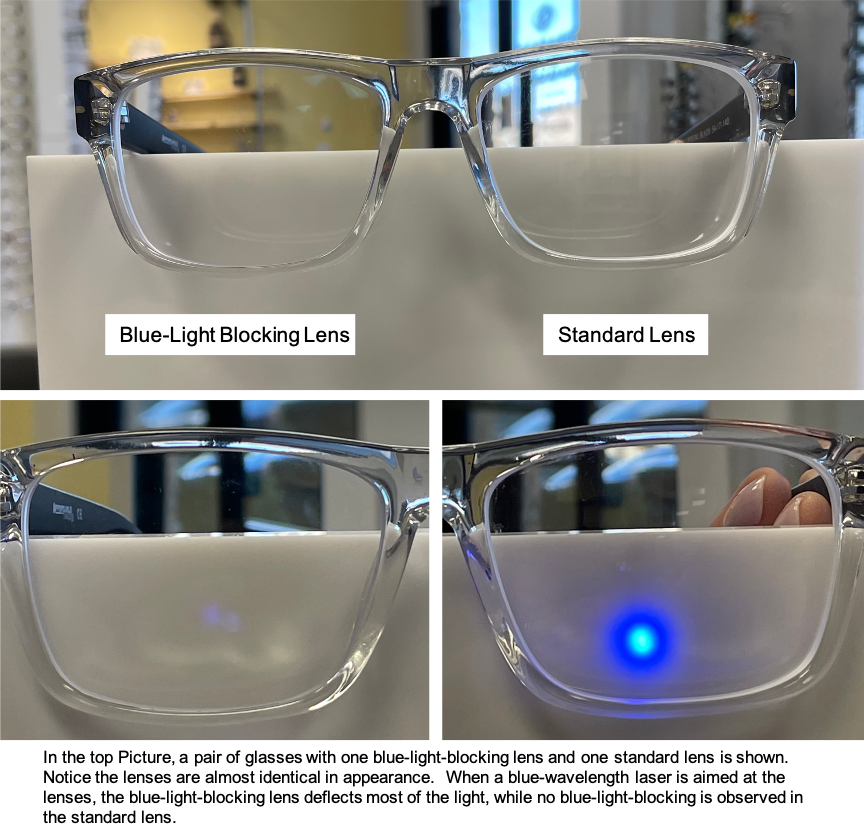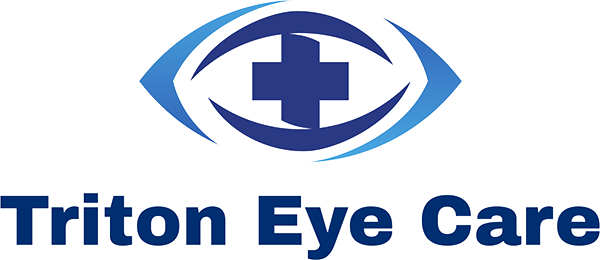
Do I need blue-light-blocking eyeglasses?
Over the last nine years, blue-light-blocking eyeglasses have been rapidly introduced and marketed. The first class-specific blue light blocking lens was released at Vision Expo in New York in 2012. By 2014, there were approximately one hundred such lenses available. Since then, they have received both good press as well as criticism as a marketing scam. So, what do these lenses really do?
To answer the question, let's look at some basic science that most of us learned in high school. If you learned about rainbows, you might recall the acronym ROYGBIV or "Roy G. Biv." ROYGBIV refers to the rainbow's colors: Red, Orange, Yellow, Green, Blue, Indigo, and Violet. These are the colors of the visible light spectrum, which is how we see. All light, whether it is visible or invisible consists of waves, so light is classified by its wavelength. In the visible spectrum, longer wavelengths have warm colors, and shorter wavelengths have cool colors. Wavelengths also have energy, with longer wavelengths having low energy and shorter wavelengths having high energy. The visible spectrum falls between infrared (IR) and ultraviolet (UV) light. IR contains longer wavelengths and lower energy; UV contains shorter wavelengths and higher energy. In terms of humans, the higher a wavelength's energy, the more potential it has to do damage. Hence, unprotected exposure to the sun's UV waves results in sunburn, and chronic exposure may lead to skin cancer.
For many years, UV light protection has been part of a prescription for eyeglasses and contact lenses. UV light can cause sunburn on the eyelids and the front surface of the eye. Burns can be from sunlight exposure or a more acute exposure such as welding without proper eye protection. Chronic exposure to UV can cause cancers of the eyelid and surface of the eye. UV can also cause growths on the surface of the eye called pinguecula on the sclera (white of the eye) and pterygium when on the cornea. Chronic unprotected UV light exposure can also accelerate cataracts, a clouding of the lens inside of the eye. However, while UV light is absorbed and may damage these tissues, this absorption also blocks UV light from getting to the back of the eye, the retina. The cornea and lens block over 95% of UV light. So, the potential for UV to cause retinal damage is low. However, staring at a solar eclipse without protection or welding without proper eye protection can cause retinal UV damage.
Visible light, including high-energy blue light, does penetrate the cornea and lens and makes it to the retina. If it did not, we would not have sight as the retina catches visible light and transmits it via our optic nerve to our brain, where images are formed. Hence, we "see" with our brains, not our eyes!
Blue visible light has three effects on our retina. First, chronic exposure to blue light from the sun increases the risk of age-related macular degeneration (AMD), especially in genetically susceptible individuals. Darkly tinted polarized sunglasses cut the majority of blue light from the sun from entering the eyes, so if you have a family history of AMD or have AMD, you should always wear sunglasses outdoors.
Second, blue light regulates our internal clock. The retina contains specialized receptors that catch blue light and send a signal to the brain to produce melatonin, our sleep hormone. Exposure to blue light suppresses melatonin production producing wakefulness. Once blue light exposure stops, melatonin is produced, which makes us sleepy. Until about 25 years ago, sunlight was our principal source of blue light. So, unless your home was lit by fluorescent lights, exposure to blue light after dark was minimal. Nowadays, electronic screens and energy-efficient lighting emit blue light. So, exposure to blue light after dark has increased, and along with it, the number of people who have developed sleep disorders.
Third, blue light is out of focus when it enters our eyes, and we physically can't focus it. However, this does not keep our eyes from trying to focus on blue light, and it is this constant focusing effort that can make our eyes feel tired when viewing electronic screens. The term for tired eyes from electronic screen usage, whether hand-held or from a desktop computer, is digital eye strain (DES). While other factors such as improper prescription and ergonomics contribute to DES, the majority of pixels in electronic screens are blue, and the blue light they emit creates visual fatigue.
It is this third aspect for which blue-light-blocking glasses are helpful. While wearing them outdoors can prevent some blue light from entering the eye, we need a dark polarized lens to maximally block sunlight. Regarding sleep, we again must look at wavelengths. Blue light can be divided into low, medium, and long wavelengths. The blue light that regulates sleep has longer wavelengths, and standard blue-light-blocking lenses block only a very small portion of this light. For blue-light-blocking glasses to be helpful for sleep, they would have to be as dark as sunglasses.
So, if you spend many hours per day looking at digital screens, this is where blue light blocking lenses are helpful. The wavelengths that digital screens produce peak in the middle of the blue light spectrum and these lenses block low to medium wavelengths. Over the years, I have had many patients tell me that their eye fatigue is much less when wearing their blue-light-blocking lenses. Perhaps you may want to consider them for your next pair of glasses.



